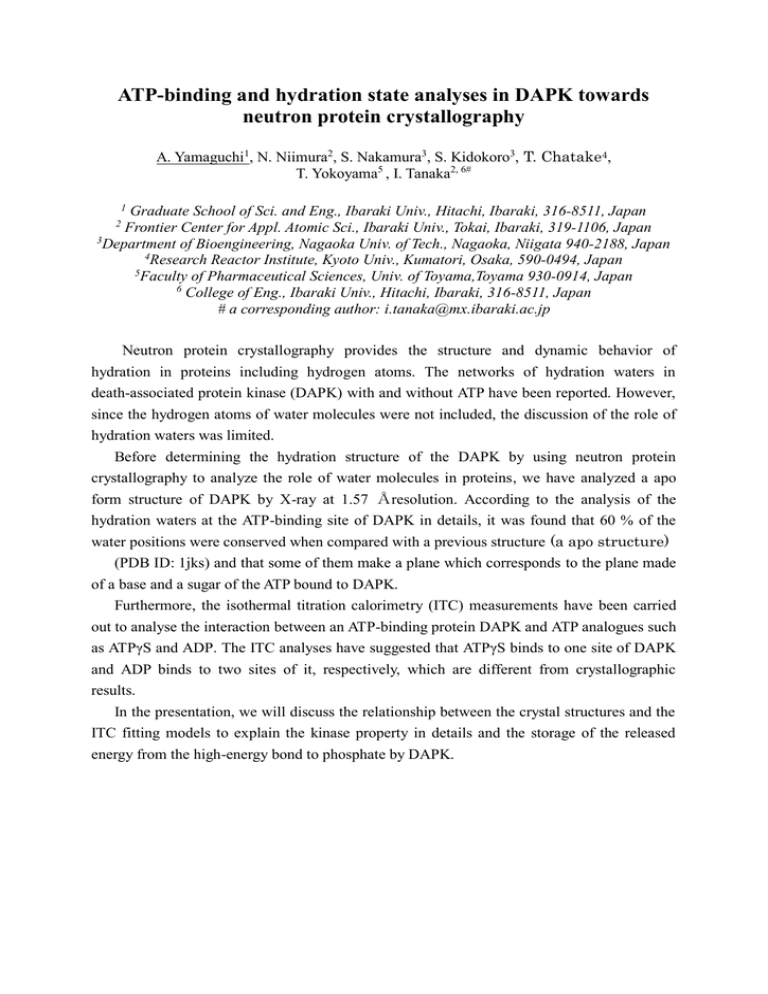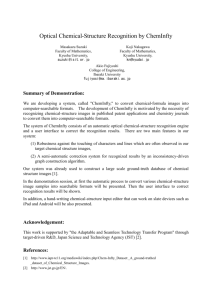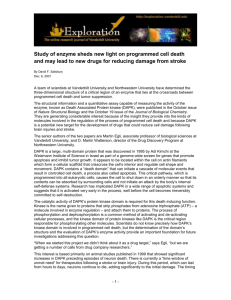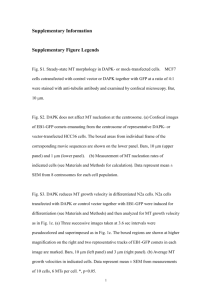ATP-binding and hydration state analyses in DAPK towards - J-Parc
advertisement

ATP-binding and hydration state analyses in DAPK towards neutron protein crystallography A. Yamaguchi1, N. Niimura2, S. Nakamura3, S. Kidokoro3, T. Chatake4, T. Yokoyama5 , I. Tanaka2, 6# 1 Graduate School of Sci. and Eng., Ibaraki Univ., Hitachi, Ibaraki, 316-8511, Japan Frontier Center for Appl. Atomic Sci., Ibaraki Univ., Tokai, Ibaraki, 319-1106, Japan 3Department of Bioengineering, Nagaoka Univ. of Tech., Nagaoka, Niigata 940-2188, Japan 4Research Reactor Institute, Kyoto Univ., Kumatori, Osaka, 590-0494, Japan 5Faculty of Pharmaceutical Sciences, Univ. of Toyama,Toyama 930-0914, Japan 6 College of Eng., Ibaraki Univ., Hitachi, Ibaraki, 316-8511, Japan # a corresponding author: i.tanaka@mx.ibaraki.ac.jp 2 Neutron protein crystallography provides the structure and dynamic behavior of hydration in proteins including hydrogen atoms. The networks of hydration waters in death-associated protein kinase (DAPK) with and without ATP have been reported. However, since the hydrogen atoms of water molecules were not included, the discussion of the role of hydration waters was limited. Before determining the hydration structure of the DAPK by using neutron protein crystallography to analyze the role of water molecules in proteins, we have analyzed a apo form structure of DAPK by X-ray at 1.57 Åresolution. According to the analysis of the hydration waters at the ATP-binding site of DAPK in details, it was found that 60 % of the water positions were conserved when compared with a previous structure (a apo structure) (PDB ID: 1jks) and that some of them make a plane which corresponds to the plane made of a base and a sugar of the ATP bound to DAPK. Furthermore, the isothermal titration calorimetry (ITC) measurements have been carried out to analyse the interaction between an ATP-binding protein DAPK and ATP analogues such as ATPγS and ADP. The ITC analyses have suggested that ATPγS binds to one site of DAPK and ADP binds to two sites of it, respectively, which are different from crystallographic results. In the presentation, we will discuss the relationship between the crystal structures and the ITC fitting models to explain the kinase property in details and the storage of the released energy from the high-energy bond to phosphate by DAPK.



